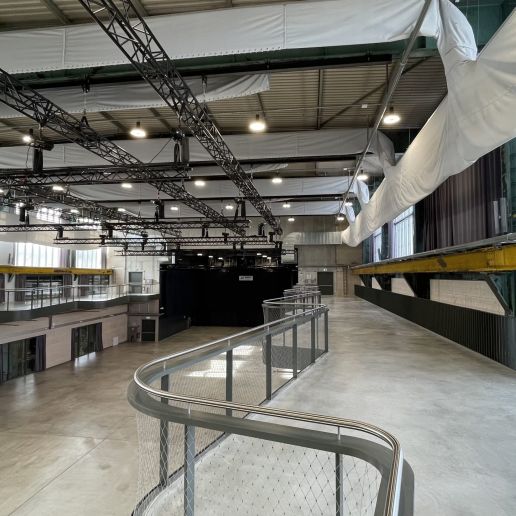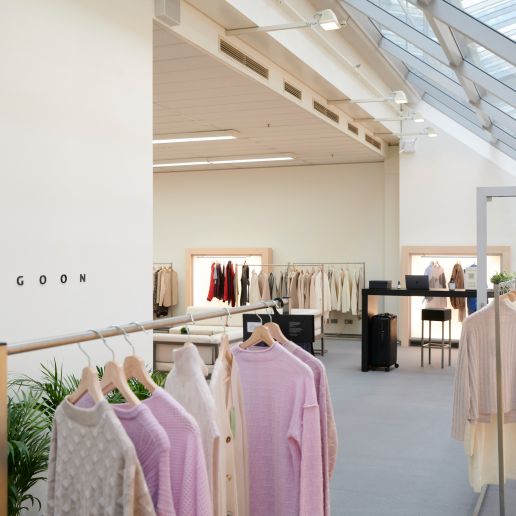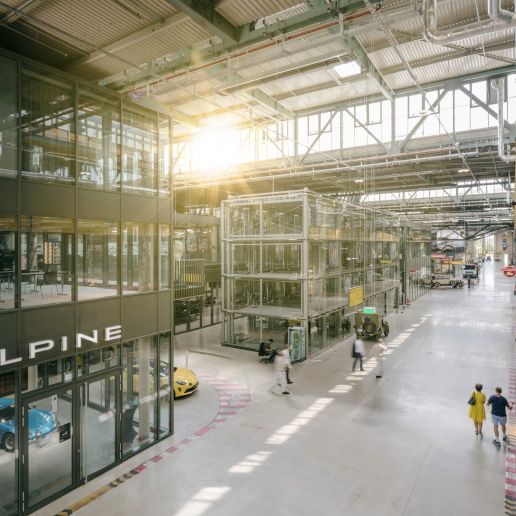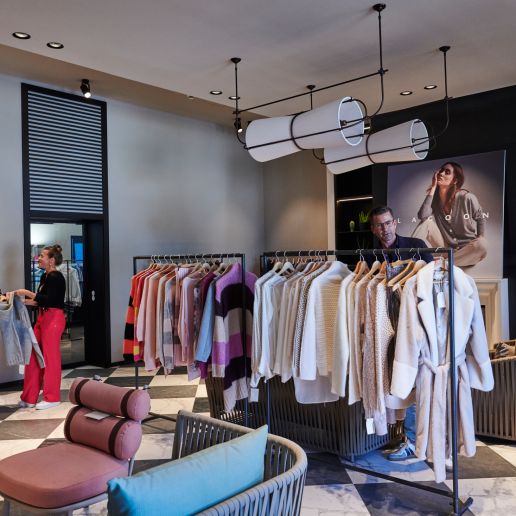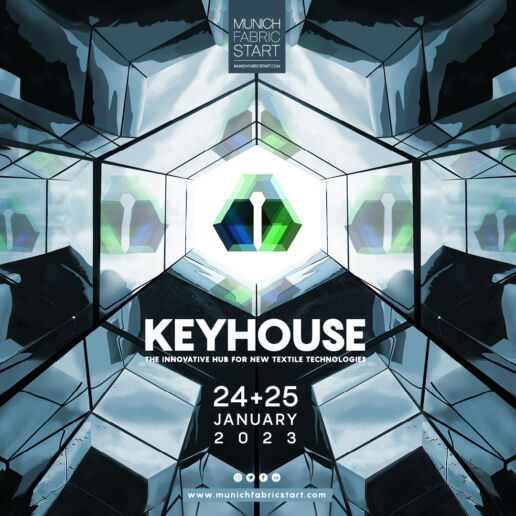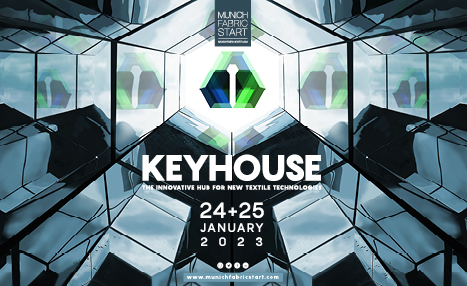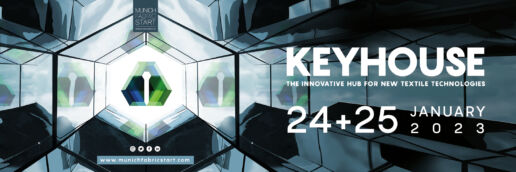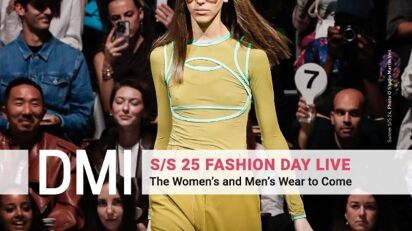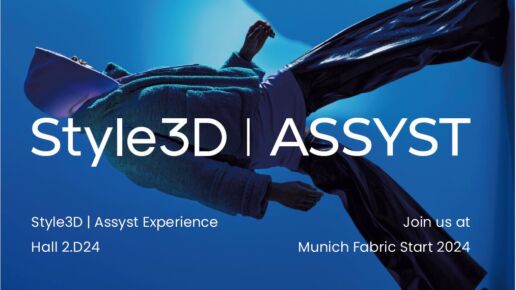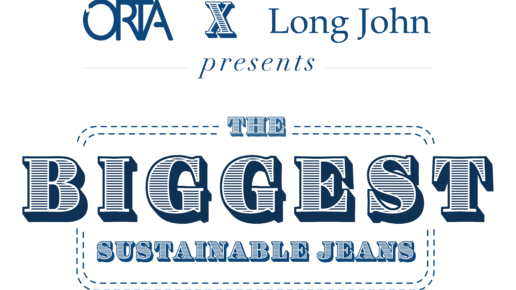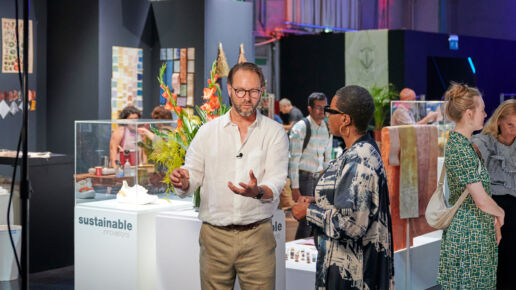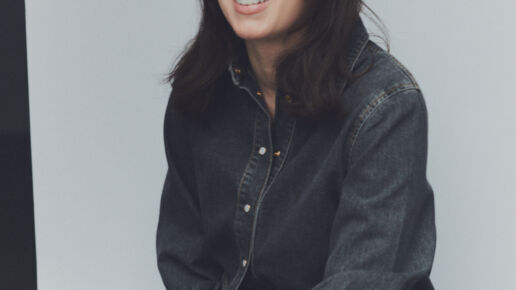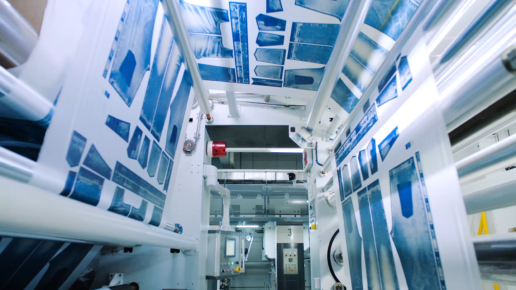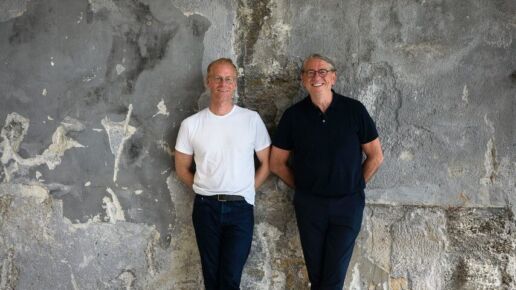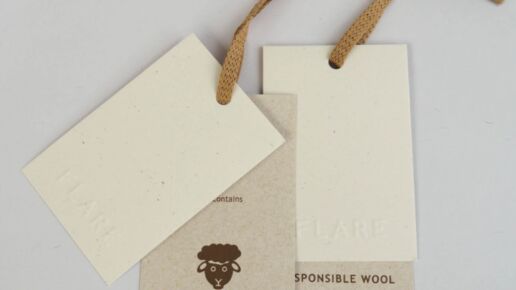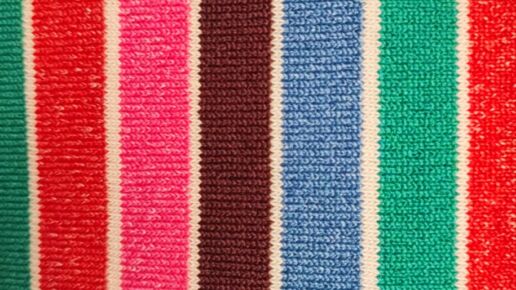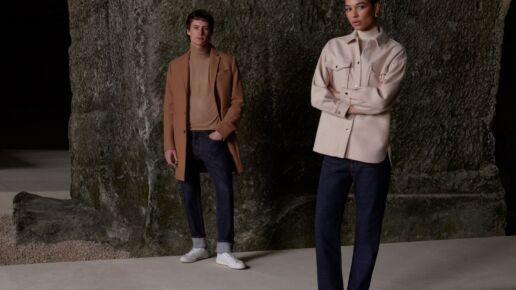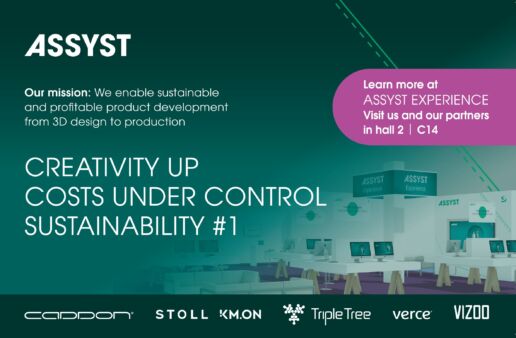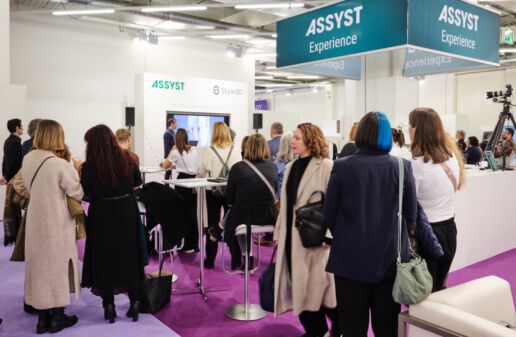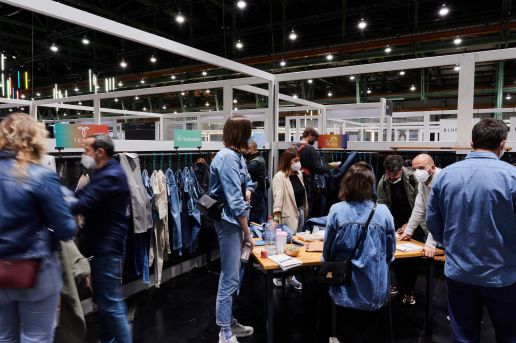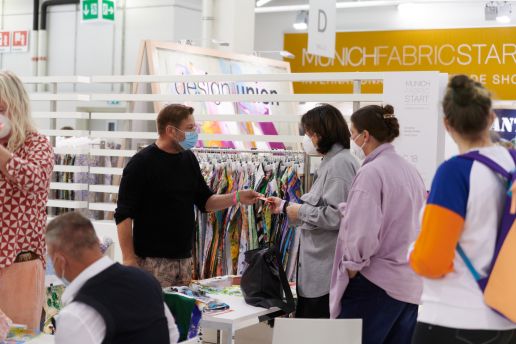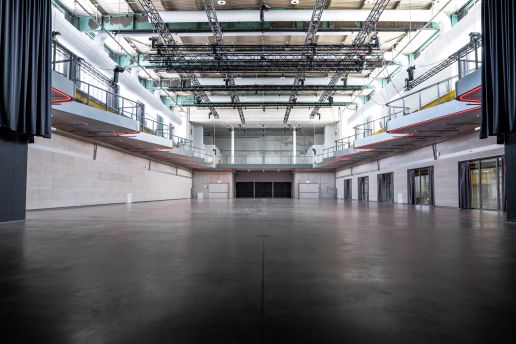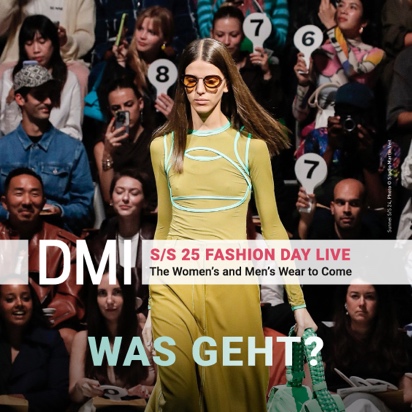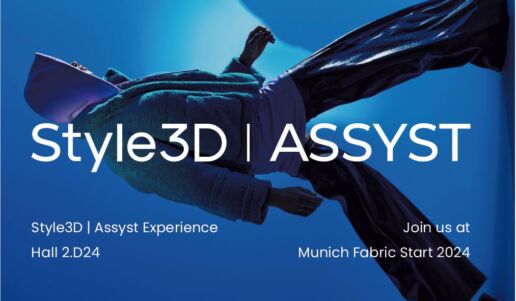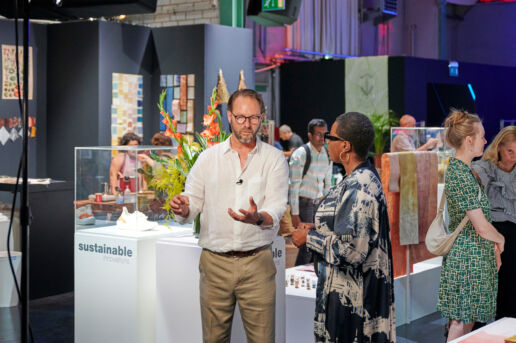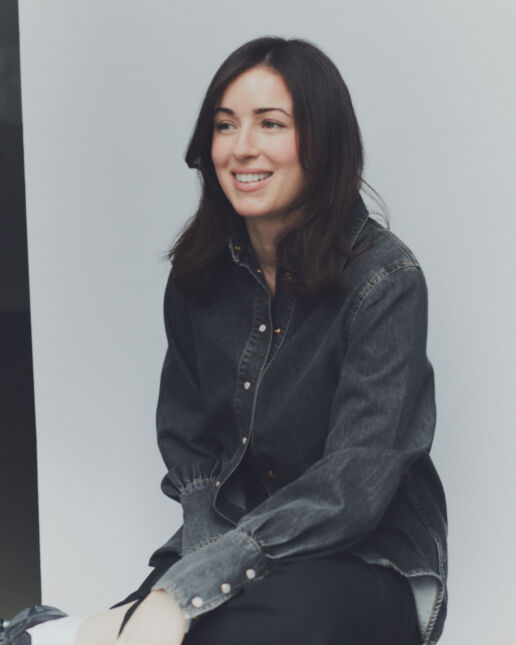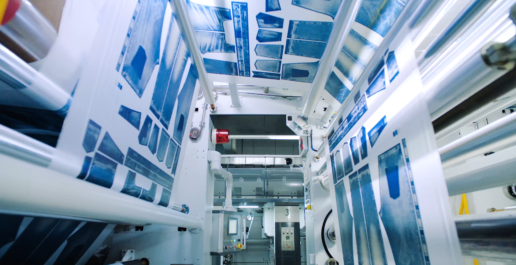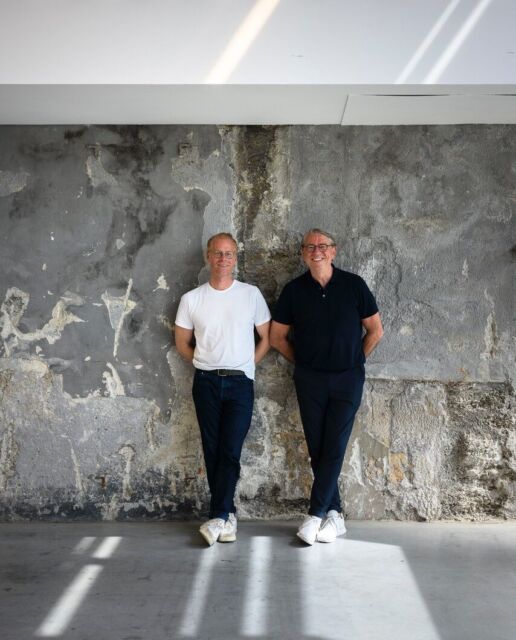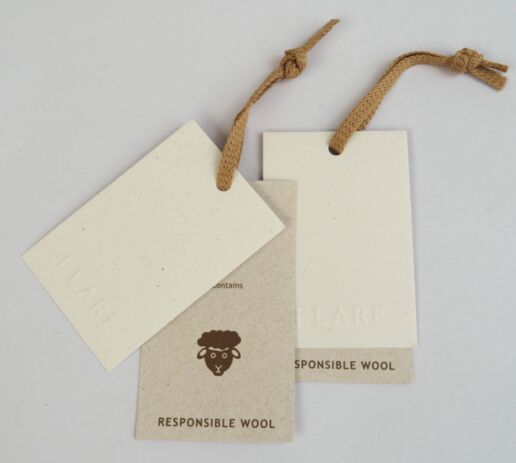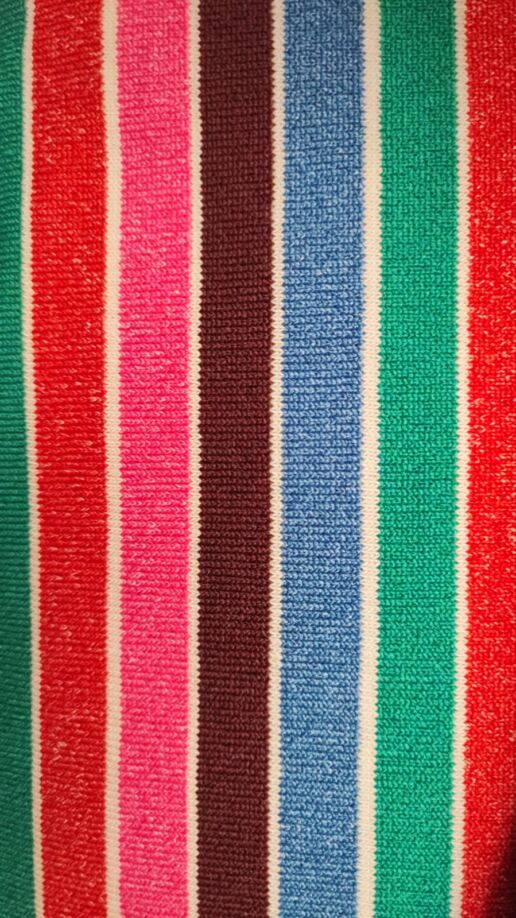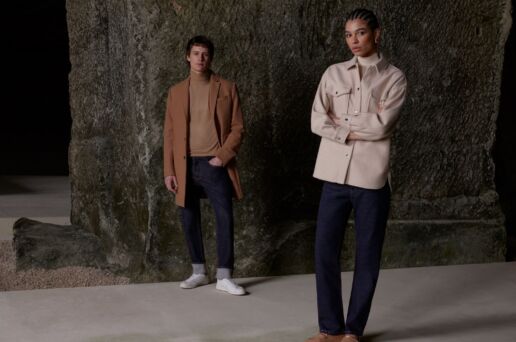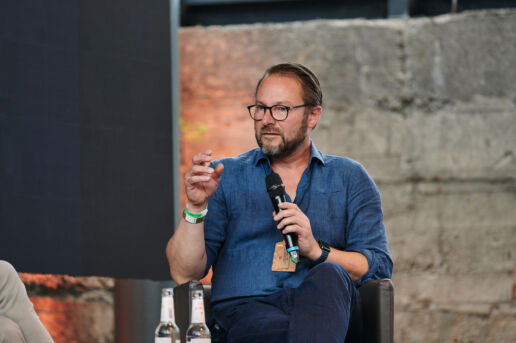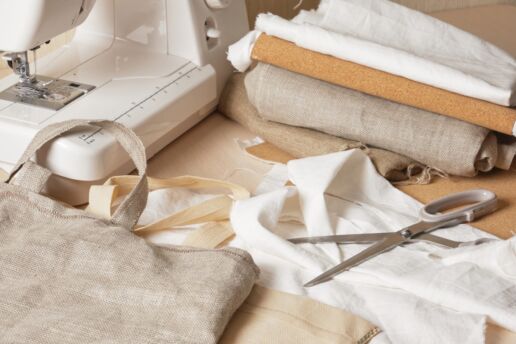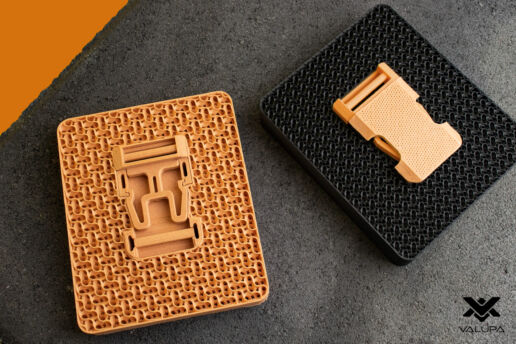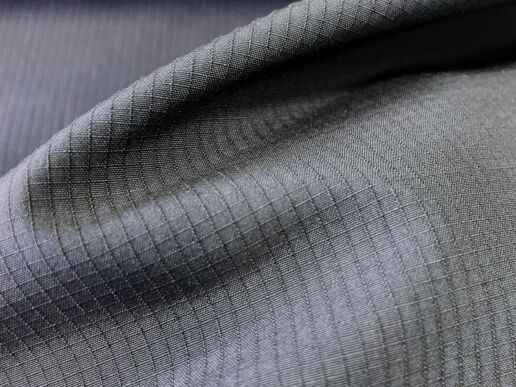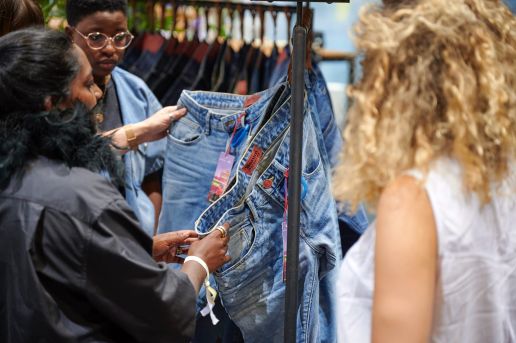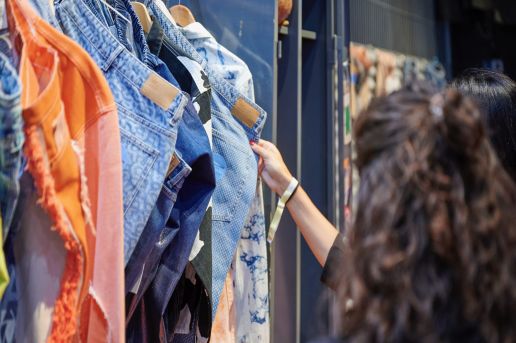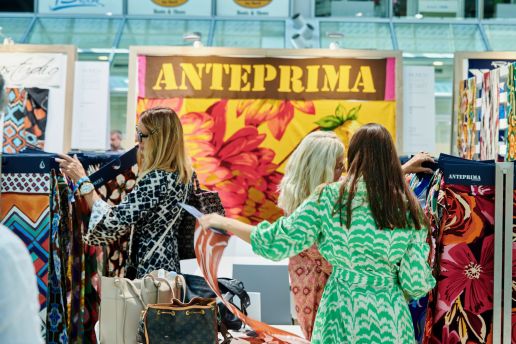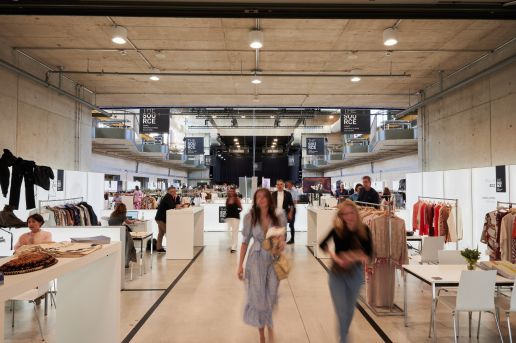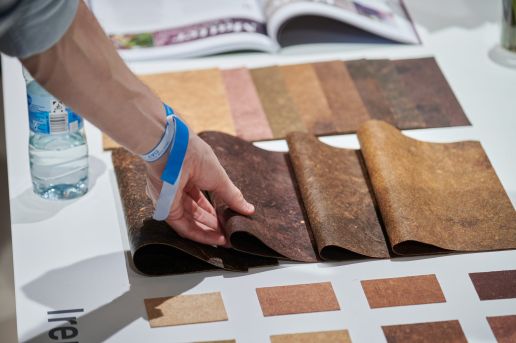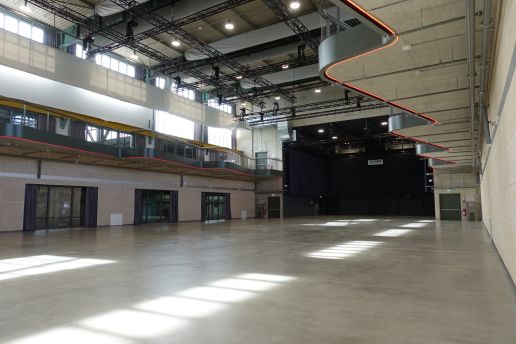Future Trends
KEYHOUSE 2023
Im atmosphärischen Industriecharme des KEYHOUSE, der Halle 5, zeigen progressive Anbieter und Global Player aus branchenübergreifenden Bereichen ihre aktuellen Neuentwicklungen und Innovationen. Auf über 1.000 Quadratmetern finden Sie richtungsweisende Smart Textiles, Future Fabrics und neue Technologien – sei es in Punkto Nachhaltigkeit, Kreislaufwirtschaft, Digitalisierung, Traceability, Technologie oder Finishing. Inszeniert als interaktiver Think Tank stehen zukunftsweisende Show Cases neben Sustainable Innovations im Spotlight.
Im KEYHOUSE befindet sich auch das Hauptvortragsforum der MUNICH FABRIC START mit exklusiven Keynotes, Podiumsdiskussionen, Trend Präsentationen, Q&A Sessions & Experten-Talks internationaler Branchen-Insider. Dies sind einige der innovativen Brands, die ihre Neuheiten während der letzten KEYHOUSE Edition im Januar 2023 präsentiert haben.
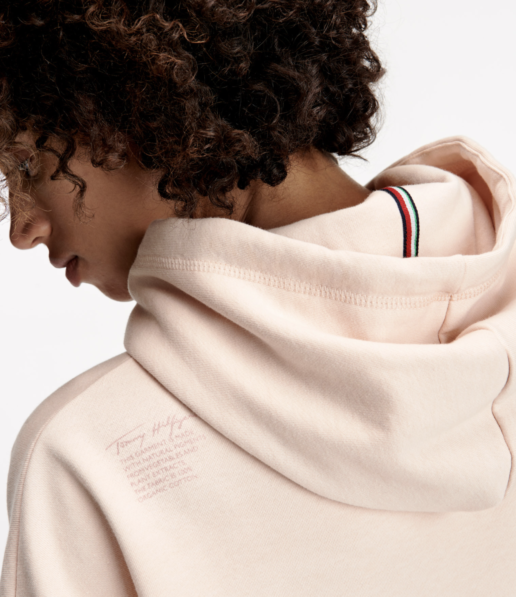
FICUS INNOVATIONS
Stellen Sie sich eine Technologie zum Färben von Textilien vor, die im Vergleich zu herkömmlichen Reaktivfärbemethoden mehr als 50 % Wasser und Energie spart. Stellen Sie sich außerdem vor, dass sie natürliche Pflanzenabfallextrakte als Farbstoffe und Hilfsstoffe für alle Vor- und Nachbehandlungs- und Färbeprozesse verwendet. Ficus Innovations hat seine einzigartige Technologie zum Färben von Naturstoffen nach 7 Jahren R&D entwickelt. Ziel ist es, natürliche Ressourcen zu schützen und wiederherzustellen, indem die Einführung nachhaltiger Stofffärbe-, Druck- und Veredelungsprozesse beschleunigt wird.
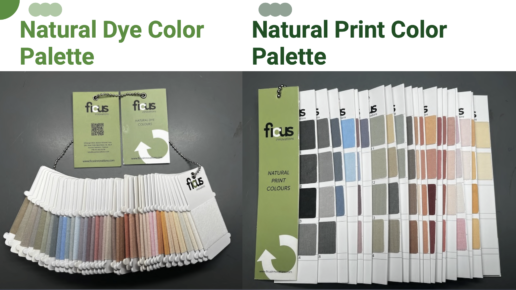
KAISER & DYSTAR
Der türkische Laundry-Anbieter Kaiser hat kürzlich das Advanced Used-Look-Konzept für modische Wash-Down-Effekte lanciert. Dieses Verfahren nutzt einzigartige und nachhaltigere Methoden, um mit einer neuen Farbstoffgruppe namens Lava Dye OZN einen Used-Look auf farbigen Kleidungsstücken zu erzielen. Das Advanced Used Look-Konzept biete eine einzigartige Lösung für die Probleme des Marktes in Bezug auf Kosten, Echtheit, Reproduzierbarkeit und Nachhaltigkeit bei used Non-Denim-Looks mit wasserlosen Methoden und der speziellen DyStar-Chemie.
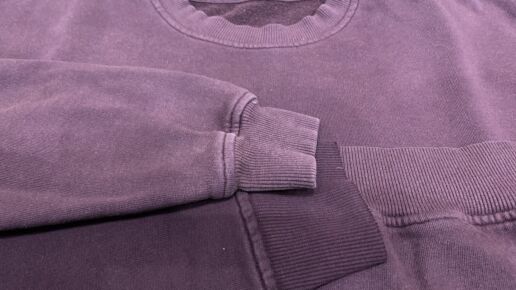
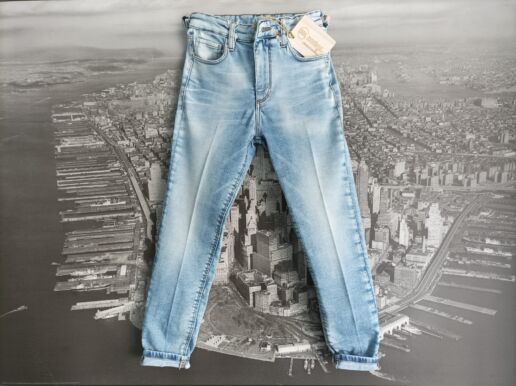
MONTEGA
Rapid Dry ist das revolutionäre Produkt von Montega, das den Trocknungsprozess verkürzt und einen Mehrwert für das fertige Kleidungsstück schafft. Dank seiner speziellen Formel ermöglicht Rapid Dry eine schnellere Verdunstung des Wassers in der Faser, Energieeinsparung während der Trocknungsphase und folglich niedrigere Kosten für den gesamten Prozess, wodurch ein saubereres Kleidungsstück mit weniger Verschleiß erzielt wird.
REACTIVE REALITY
Reactive Reality ist der führende Anbieter von Technologien zur virtuellen Anprobe und zur Erzeugung virtueller Modebilder. Die PICTOFiT-Plattform ermöglicht es Modemarken und Einzelhändlern, virtuelle Umkleidekabinen und fotorealistische Avatare nahtlos in ihre Website, App und In-Store-Lösungen zu integrieren. Für Verbraucher erstellt die Plattform fotorealistische Avatare von Käufern, die genaue Größenempfehlungen für alle Marken ermöglichen. Die Avatare können interaktiv eingekleidet werden und bieten unbegrenzte Outfit-Kombinationen und virtuelle Hintergrundszenen.
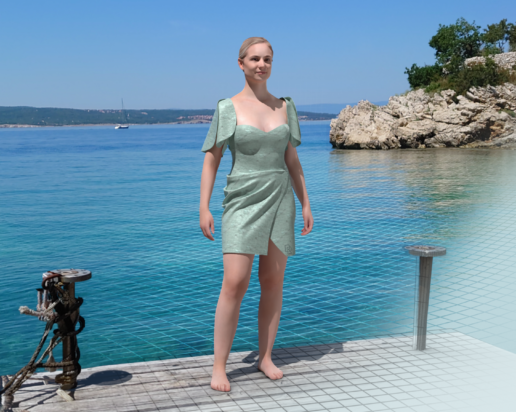
TORAY INTERNATIONAL EUROPE
Toray ist ein integrierter Chemiekonzern, der seine Geschäftstätigkeit in 29 Ländern und Regionen weltweit ausübt. Das 1926 gegründete Unternehmen ist ein weltweit führender Hersteller von fortschrittlichen Materialien und ein Lösungsanbieter mit Schwerpunkt auf Fasern, Textilien und Bekleidung.
Das könnte Sie auch interessieren
TIMELY TIMELESS
18. January 2024
Langlebigkeit steht hoch im Kurs. Und damit ist nicht nur eine solidere Qualität gemeint, sondern auch und vor allem ein zeitloseres Design.
Digitale Klarheit im Design – ASSYST
16. January 2024
Für das Thema Nachhaltigkeit sind normalerweise Einkauf und Produktion zuständig. Wer aber über den Einsatz von abbaubaren Stoffen hinausdenkt, kann Kosten, Materialverbrauch und Profitabilität deutlich beeinflussen. Neu daran: Der Schlüssel dazu liegt in der Hand der Kreativen.
ORTA x Long John
13. January 2024
Togetherthey developed the biggest sustainable jeans everproduced to set a new milestone within the denim industry.
GANNI – Fashion made from next-gen materials
9. January 2024
With all our communication we try to speak to our community in a meaningful and honest, not perfect way, showing the hard stuff, the stuff we didn’t get right, as much as we show the stuff we nailed.
STELLA BLU PRESENTS ITS FIRST COOLTRANS DENIM COLLECTION MADE WITHOUT INDIGO
4. January 2024
This technology opens up extremely exciting possibilities.
CLARITY In conversation with the organisers of MUNICH FABRIC START about the industry, the trade show calendar and new dates
2. January 2024
CLARITY » the pursuit of structure and unambiguousness on both a large and small scale «
ReSOURCE – Autumn.Winter 24/25
24. October 2023
Certifications, recycled materials, environmentally friendly - that's what the sustainable fabrics from the ReSource range stand for.
The Fabric Trends Autumn.Winter 24/25 – Part VIII
19. October 2023
The combination of plum and matcha is futuristic and calming. Apricot Crush gives hope and awakens positivity, rounded off with a hint of intensely rusty autumn dust.
BLUEZONE CONEXXION Autumn.Winter 24/25 – Part IV
17. October 2023
Blacklight steht für dunkle Indigofarben, Schwarz, Overdyes und beschichtete Stoffe. Ihre Overdye-Technik verleiht dem Stoff eine Reihe von Farben auf beiden Seiten für zusätzliche Vielseitigkeit.
Designers as game changer - ASSYST
Sustainability:
Designers as game changers
Creativity up and costs under control – that’s the true heart of sustainability.
At the Assyst Experience, creative designers will see how they can have a huge influence on material consumption.
Designers as game changers
At the Assyst Experience, creative designers will see how they can have a huge influence on material consumption.
Purchasing and production are usually responsible for sustainability. However, you can significantly influence costs, material consumption and profitability if you think beyond reusable fabrics – and the key to this is in the hands of apparel designers.
Shaping sustainability and profitability with 3D
Nowadays, development in 3D is everywhere. Optical prototypes help to save samples during approval procedures. How sustainable and cost-efficient the entire development process actually is becomes apparent as soon as the design draft moves on to technical product development. Most 3D design software is not based on production-safe patterns. If important information for product development and production such as seam allowances and sizing & fitting is missing, the pattern must be changed and re-approved in 2D. Physical samples are then necessary, despite the 3D design. Not so with Assyst.
Achieving a better hit rate for designs – without any physical samples
The Assyst 3D design software is always based on a production-oriented 2D pattern that supports a seamless process from 3D through to production. This ensures greater sustainability and cost efficiency. Because a digital product has already been created in the design you can decide on the look, but also whether the sizing & fitting is correct and what the later production result will be. These advantages are evident in the entire process – but especially in design, where time is tight. The more efficient this phase is, the less burdensome it will be for all departments. Development can be cut short to just a few days instead of weeks.
Buying and producing precisely the right amount of fabric
In the digital development process data flows from production to design just as easily and quickly as from design to production. This is important because a lot can be achieved at the beginning of the process. Let’s assume that the 3D design software is networked with order optimization. If so, all the participants can estimate the fabric consumption and material costs from the first draft and quickly introduce countermeasures if the product costs deviate in any way from the collection framework plan. Companies can also negotiate in a more targeted manner and only have as much fabric produced as is needed.
Always the correct production result for color, material and sizing & fitting
All the elements of a clothing product can be digitally controlled in the process. Color can be captured precisely and sent to supply partners. These values serve as exact references for quality control. Digital fabrics with the textures and properties of the actual materials help creative designers with product simulation and facilitate remote decisions.
Thinking of new ways
If the product is entirely digital, it makes sense to become creative in the process and drive innovations like automation. Not only fabric developments but also knitting designs can be developed digitally, visualized in 3D for a sizing & fitting check and then transferred straight to the knitting machine.
The Assyst Experience – a new event format for digital design
At the Assyst Experience, these topics will come alive for you! Exemplary processes give designers ideas for implementation in their own companies, and lectures on key topics of the industry complete the program.
Discover more industry-changing innovations at our upcoming trade shows:
A Vibe Shift is coming
Often, fashion trends are merely new variations on already familiar themes over many seasons. But then at some point there is suddenly a fundamental break, a completely new attitude to life, a completely different basic mood, a “vibe shift”. We are now at such a turning point.
The measures necessary to contain Covid 19 have been so all-encompassing that they have actually robbed us of all joy in life in the meantime. Many of us are left with the feeling that we have lost two years of our lives. This is felt particularly intensely by young people who were irretrievably robbed of part of their precious youth by the pandemic.
Greta Thunberg speaks for her entire generation when she says in retrospect: “We have become more aware that life is short.” The realisation that our time on earth is running out far too quickly is anything but new, but it is particularly topical for us now.
Fashion psychology professor Carolyn Mair also observed during the pandemic how consumers “realise that life is precious, whereas before they might have taken things for granted. They are seizing the moment.”
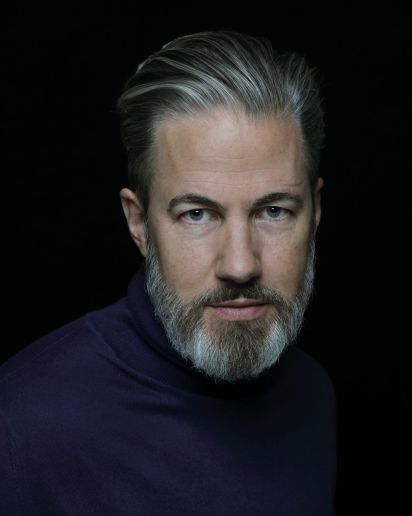
Carl Tillessen
As the 20s take shape, it becomes clear that the Lifestyle of Health and Sustainability, which has dominated the Zeitgeist for the past two decades, has reached its end. Because the L.O.H.A.S. is the opposite of the moment. It is the eternal later. If we chastise ourselves now – so he promises – we will have a healthy body and a healthy environment later. This is and remains true, but through the collective pandemic experience, the fear that we will neglect to enjoy today because of all the thinking about tomorrow has become overwhelming. We crave self-indulgence, need outlets, want to break out, go overboard, want to live as if there is no tomorrow …
GET INFORMED & INSPIRED AT MUNICH FABRIC START AT DMI:
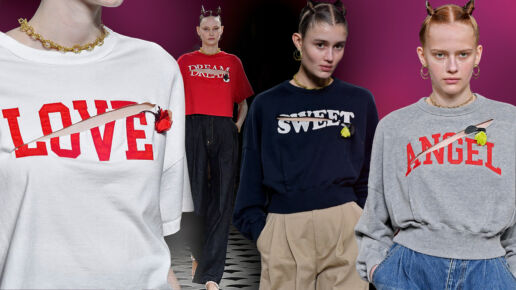
Find out what this means for fashion and what follows the Lifestyle Of Health And Sustainability at MUNICH FABRIC START at the trend presentation of DMI S/S 24
Wednesday, 25 January, at 4:00pm
in Room K1 in front of Hall 1 at MOC.
Discover more industry-changing innovations at our upcoming trade shows:
Textile Innovations: Ready To Be Supercharged in 2023?
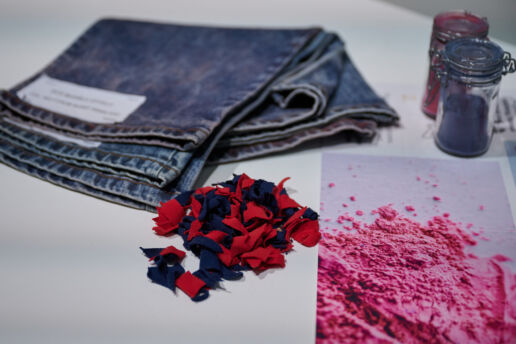
When it comes to textiles, one of the biggest challenges has been the industry taking on the responsibility to examine its processes. Although a necessary step, it is not an easy one for an industry built on foundations that date back to the mid-1700s industrial revolution. The good news is that with the help of new technology, the textiles industry is beginning to become better equipped to address most of the pain points in its supply chain, and in 2023 we may actually witness more innovations than ever being accelerated and scaled.
What To Expect in 2023
In the last few years, a shift in values has been redefining the textile industry. It is a shift driven by various technological solutions created to transform the global textile industry, so businesses can reach their sustainability and circularity goals and also understand the role that policy will most likely play in pushing value-driven fabrics forward.
So with innovation as its backbone, what can industry players seeking a more constructive view of the textile market expect in 2023?
Well, here is an overview of what is expected from the textiles space in 2023:
- There will be an acceleration and scaling of textile technologies that will position companies, small and midsize players, to explore further innovations that will help them align their business so they can adapt their practices and commit long-term.
- New fabrics will no longer survive but thrive as more research into sustainable materials and technologies increases and more brands continue to invest in sustainable and safer innovations.
- The textile industry in 2023 is expected to focus less on decadence and more on authenticity.
- We will witness the adoption of new business models that support sustainability initiatives — including supply chain traceability and the reduction of material usage.
- One of the growth drivers of the global textile market will be increasing demand for environmentally friendly and readily available natural fibres. In addition, more performance and technical fabrics will lean towards natural fibres.
- In 2023, more governments will start imposing stringent regulations. As a result, there will be more pressure on textile manufacturers to be less scattered and unorganised, especially when using toxic dyeing chemicals.
- The landscape will see an increase in market players whose USPs will be strongly driven by new technology and innovations. With a competitive edge, these material innovators bring new growth opportunities and strategies to the market.
- The textiles industry will continue to face materials, manufacturing and sustainability challenges in 2023. However, the good news is that the solutions that will continue to be explored in 2023 will be of a collaborative kind.
- Regarding future proofing manufacturing, 2023 strategies will push forward new research around new materials, digital manufacturing and sustainability for future textiles. In addition, textile manufacturers will create new supply chain models based on vertical integration, nearshoring, and small-batch production.
- In 2023, expect speed and agility to effectively tackle the challenges that slow down the growth of the textile and garment industry.
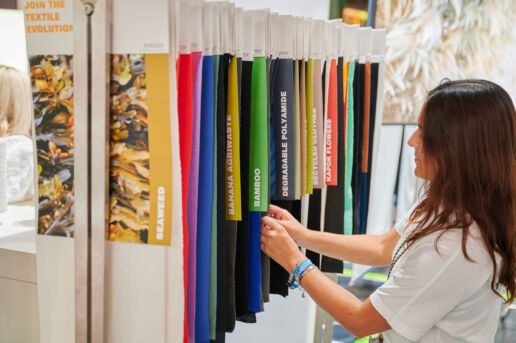
If you take away one thing, let it be this:
don’t be scared by the threat of new textile legislation distracted by the predicted digital shakedown or exhausted by the growing customer demands for sustainability.
Instead, ask yourself, if the future is promised to those who can ride through the challenges by embracing technology across their supply chain, can I afford to shy away from strategically sharpening my approach to the innovative dynamics driving the textile industry in 2023?
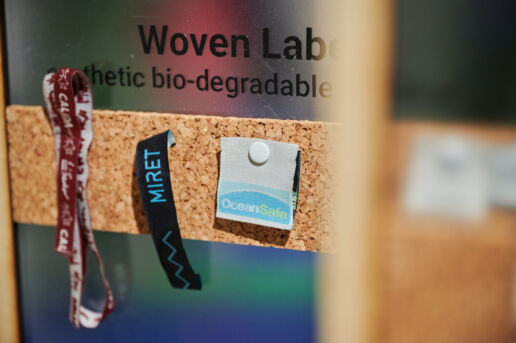
Are you interested in more in-depth facts and figures on the new textile economy?
Visit the Shape Innovate Lounge in H5 | 04 or attend the mini-lectures in the Keyhouse.
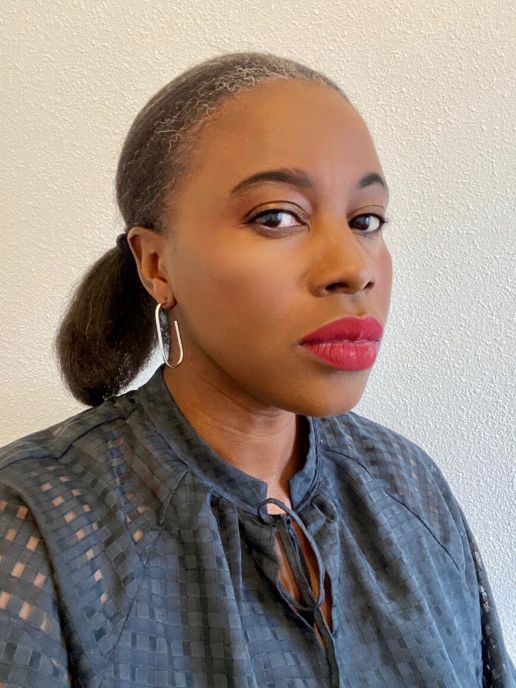
About the author
Founding editor-in-chief of Shape Innovate, Muchaneta has worked in the fashion industry for over 14 years. She is currently one of the leading influencers speaking and writing about the merger of fashion with technology and wearable technology.
Muchaneta ten Napel | m@shapeinnovate.com
This might be also interesting for you
TIMELY TIMELESS
18. January 2024
Langlebigkeit steht hoch im Kurs. Und damit ist nicht nur eine solidere Qualität gemeint, sondern auch und vor allem ein zeitloseres Design.
Digitale Klarheit im Design – ASSYST
16. January 2024
Für das Thema Nachhaltigkeit sind normalerweise Einkauf und Produktion zuständig. Wer aber über den Einsatz von abbaubaren Stoffen hinausdenkt, kann Kosten, Materialverbrauch und Profitabilität deutlich beeinflussen. Neu daran: Der Schlüssel dazu liegt in der Hand der Kreativen.
ORTA x Long John
13. January 2024
Togetherthey developed the biggest sustainable jeans everproduced to set a new milestone within the denim industry.
GANNI – Fashion made from next-gen materials
9. January 2024
With all our communication we try to speak to our community in a meaningful and honest, not perfect way, showing the hard stuff, the stuff we didn’t get right, as much as we show the stuff we nailed.
STELLA BLU PRESENTS ITS FIRST COOLTRANS DENIM COLLECTION MADE WITHOUT INDIGO
4. January 2024
This technology opens up extremely exciting possibilities.
CLARITY In conversation with the organisers of MUNICH FABRIC START about the industry, the trade show calendar and new dates
2. January 2024
CLARITY » the pursuit of structure and unambiguousness on both a large and small scale «
ReSOURCE – Autumn.Winter 24/25
24. October 2023
Certifications, recycled materials, environmentally friendly - that's what the sustainable fabrics from the ReSource range stand for.
The Fabric Trends Autumn.Winter 24/25 – Part VIII
19. October 2023
The combination of plum and matcha is futuristic and calming. Apricot Crush gives hope and awakens positivity, rounded off with a hint of intensely rusty autumn dust.
BLUEZONE CONEXXION Autumn.Winter 24/25 – Part IV
17. October 2023
Blacklight steht für dunkle Indigofarben, Schwarz, Overdyes und beschichtete Stoffe. Ihre Overdye-Technik verleiht dem Stoff eine Reihe von Farben auf beiden Seiten für zusätzliche Vielseitigkeit.
"How do our actions contribute to the better?"
What is currently happening in the industry of innovators, transformers and forwardthinkers?
Different developments can be observed – especially when it comes to upcoming designers and creators, which is very interesting yet inspiring. Newcomers are about either entering the industry or creating their own one; furthermore, they all developed a very high professionalism in everything they do and how they present their ideas. Storytelling matters, that’s why we see crafts that concern and that communicate about thoughts, materials and backgrounds. They somehow reflect on the state of the industry and/or they question current systems. Just with the eye on possibilities, not to add critique. It is a friendly way to inspire.
You just said creators are “entering the industry or creating their own one”. What do you mean by that?
Well, actually right as I say. Either people and ideas enter an industry OR they create an industry. Entering means that designers or creators just fit into an industry and can get part of it or they can develop their own techniques and make it scalable and somehow create their own. Let me give you an example: WINT Design Lab discovered a new material and also discovered how to use it in order to make it relevant for the market. Either they can enter the industry OR if they find possibilities to cover all the needs within the supply chain and develop the machines to produce in a big scale, they could go big and just create their own industry.

Simon Angel
What other developments can you identify?
Back in the days, let’s say about five years ago, there was mainly one person behind a new idea that was working within a tiny studio. Compared to that, everything is so much more professional: being a material designer, you can have a studio and work with employees who assist. That is nowadays how designers get ready to present their idea to the market. You need people who bridge the gap between the studio and the market. I personally recognize a huge potential in this point of professionalism, because people get ready to connect – young designers now offer representative samples and get in touch with the industry on a very professional level. Newcomers inspire the industry.

What sounds very interesting. What do the newcomers do differently?
Things that impress the industry: crafts that concern and communicate. The designers and their innovations want to tell us stories: it’s about the material, systems (and old behaviours) but also the designs. We can get glimpses into cultural backgrounds, different techniques, social aspects and so much more. For example, the project “Rootful” by Zena Holloway and the project “Choub” by Mehdi Mashayekhi show off how to create a material out of seagrass or wood with the implemented idea to use the finished garment or the designs as tools to communicate.
That’s a positive development, isn’t it?
Yes, it is. But one thing should not be forgotten: we are in the middle of a delicate discussion on the urgency of creating, within that everybody has to
put their own position into a fresh perspective. I sometimes find it important to take a bit of a distance and ask rhetorically questions like: So what? We are
leaving the era of RE-thinking we are entering an era of PRE-thinking. We can challenge ourselves in critical self-reflection with a future smile.
We should not design just to be a designer or cook just for the sake of being a chef. We should not create just to be a creator. We should not just buy new stuff, only for the sake of being a consumer. Way more, we should cook when people need food, design when designs are not good enough and create when the world needs a new product. Let’s stay critical and ask ourselves over and over again: how do our actions contribute to the better?
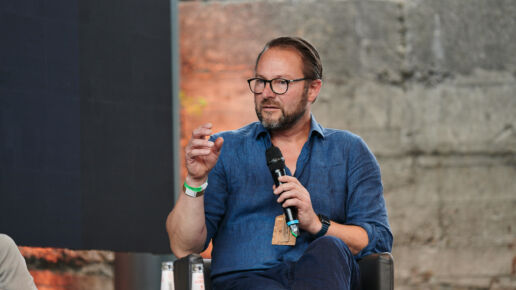
EXPOLRE AND GET INSPIRTED AT MUNICH FABRIC START
IN THE SUSTAINABLE INNOVATIONS AREA AT KEYHOUSE – H5!
Discover more industry-changing innovations at our upcoming trade shows:
Meet Saitex - the vertical Vietnamese Denim Entity
Global jeans manufacturer Saitex is going vertical as it officially announces the opening of its first denim fabric making mill in Vietnam. The new 100,000 square meter facility is located 40 minutes from its cut & sew factory near Ho Chi Minh City where 18,000 pairs of jeans are made on average per day.
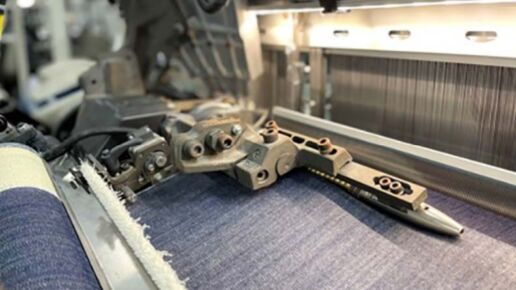
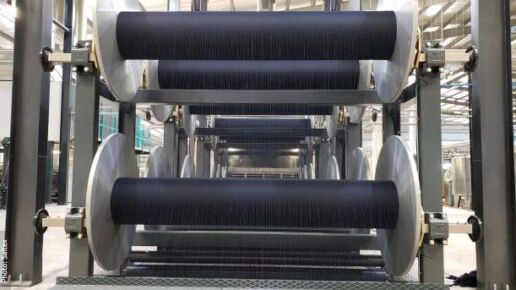
The new mill covers all operations from yarn spinning to weaving and to fabric dyeing and finishing. Saitex has announced it will produce 2 million meters of fabric per month, or 24 million yearly, and some 750 tonnes of yarn per month. These new operations have created 630 new jobs and the company says it will employ 1,000 at full capacity. As it has already done at its cut & sew factory, 20% of the jobs will be filled by people with disabilities.
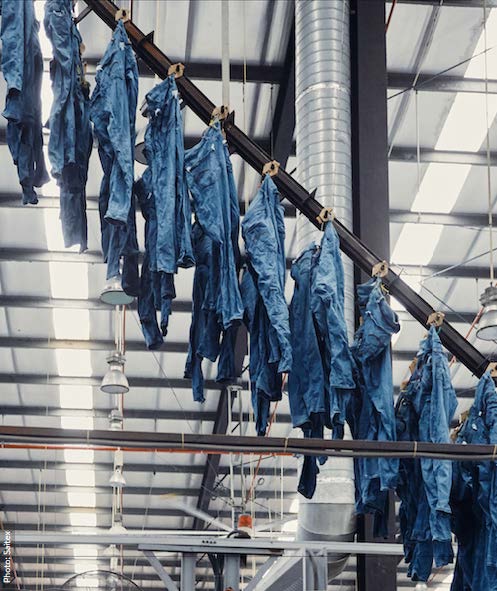
Like Saitex’s “Factory of the Future” in Los Angeles, CA, the new facility incorporates the latest and lowest impact technologies. The mill is equipped to produce yarns in pure cotton or in blends in dual-core, multiple-core and SiroSPUN technologies.
For indigo dyeing, Saitex has installed the Smart Indigo system that pre-reduces indigo via an electrochemical process. This, the company says, leads to lower CO2 emissions by 90%, requires 70% less energy and 30% less water, with oxygen as the only product released. Karl Mayer rope dyeing machines lead to further environmental savings, thanks to fewer dye bathes, and a 30% reduction in indigo and chemical usage.
Other eco-responsible features at the new site include LEED Gold Certified materials for the building, 15,000 solar panels, greywater recycling and rainwater collection systems. A vegetable garden covers 40% of the total site to feed workers and local communities. Saitex says it has also planted 6,000 trees in the industrial park, and has offset its carbon emissions by planting 50 hectares of mangroves in Vietnam, as part of its plan to contribute to climate neutrality by 2025.
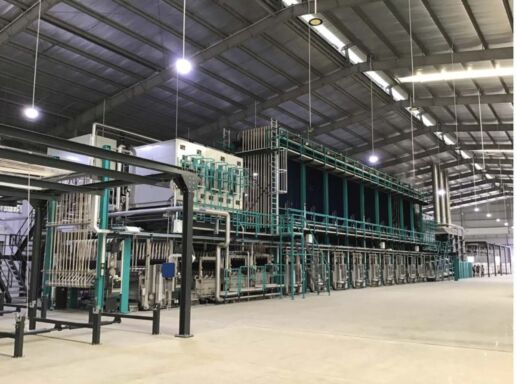

“It has been our long-term vision to close the loop on our operations. With the opening of the mill and the upcoming launch of our textile upcycling facility, Stelapop, our vision will be complete. We will close the circle, allowing us to provide unprecedented transparency in denim production and the ability to turn apparel and textile waste into high-quality goods. Our target is to become the most sustainable fabric mill on the planet making fully circular production possible for our customers.”
Sanjeev Bahl, CEO und Gründer von Saitex
This might be also interessting for you:
GANNI – Fashion made from next-gen materials
9. January 2024
With all our communication we try to speak to our community in a meaningful and honest, not perfect way, showing the hard stuff, the stuff we didn’t get right, as much as we show the stuff we nailed.
STELLA BLU PRESENTS ITS FIRST COOLTRANS DENIM COLLECTION MADE WITHOUT INDIGO
4. January 2024
This technology opens up extremely exciting possibilities.
CLARITY In conversation with the organisers of MUNICH FABRIC START about the industry, the trade show calendar and new dates
2. January 2024
CLARITY » the pursuit of structure and unambiguousness on both a large and small scale «
ReSOURCE – Autumn.Winter 24/25
24. October 2023
Certifications, recycled materials, environmentally friendly - that's what the sustainable fabrics from the ReSource range stand for.
The Fabric Trends Autumn.Winter 24/25 – Part VIII
19. October 2023
The combination of plum and matcha is futuristic and calming. Apricot Crush gives hope and awakens positivity, rounded off with a hint of intensely rusty autumn dust.
BLUEZONE CONEXXION Autumn.Winter 24/25 – Part IV
17. October 2023
Blacklight steht für dunkle Indigofarben, Schwarz, Overdyes und beschichtete Stoffe. Ihre Overdye-Technik verleiht dem Stoff eine Reihe von Farben auf beiden Seiten für zusätzliche Vielseitigkeit.
The Fabric Trends Autumn.Winter 24/25 – Part VII
12. October 2023
New Capsule Collection: luxury knitwear for timeless pieces. In a time of increasing resource scarcity, Target is responding to consumers' desire to invest in long-lasting and timeless pieces.
The latest accessory developments for Autumn.Winter 24/25 – Part IV
10. October 2023
valupa develops sustainable and circular supplies such as buckles, buttons, rings and other accessories locally from 100% renewable raw materials. In January 2023, the startup registered its first patent for a new type of modular buckle system.
PER4ORMANCE NEWS – AUTUMN.WINTER 24/25
5. October 2023
Solapel™ is the PFAS free durable water repellent technology from Sunnytex that retains 70% efficiency even after 120 washes, equivalent to 24 hours of continuous washing.
DARE & CARE
1. What can exhibitors and visitors expect at MUNICH FABRIC START in January 2023?
Sebastian Klinder: As an international fabric trade show and Germany’s leading platform for future-relevant textile innovations in the fashion sector, we are once again creating high-quality formats and offerings at MUNICH FABRIC START this season – from a broad and relevant exhibitor portfolio, to top-class lectures and panels, to trend outlooks and numerous opportunities to connect.
We are very pleased that around 900 selected international producers will once again be joining us in Munich in January to show their latest trends and innovations on a total exhibition area of around 42,500 square metres – thus demonstrating that, even in times of uncertainty, we have the courage to think big.
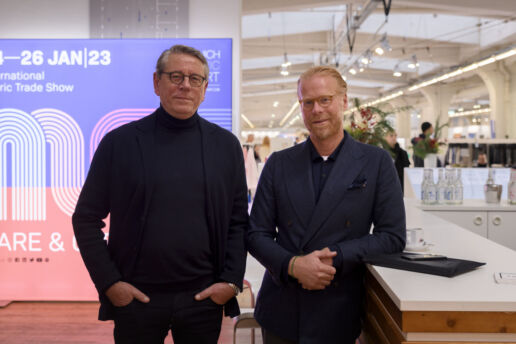
Frank Junker, Creative Director MUNICH FABRIC START; left
Sebastian Klinder, Managing Director MUNICH FABRIC START; right
“We are continuing the positive, motivated and ambitious mood that is evident at the current shows.«
Frank Junker: Nothing ventured, nothing gained – especially now. The conditions are currently changing and this requires openness to new things and the courage to move forward. Not exuberantly, but with care and deliberation. This is also reflected in our motto this year, “DARE & CARE”. Changes are taking place on all levels: from a new sense of community to the struggle for freedom with protests to hedonism and the celebration of the moment; not least the need for islands of tranquility, for joy and above all for real, human encounters. In these topics and controversies, apart from all the uncertainty, lies an immense potential for inspiration and the power to dare something.
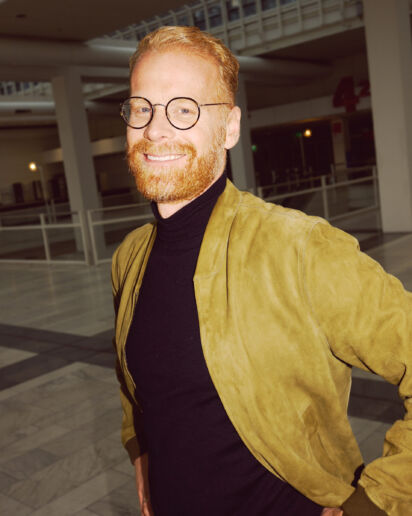
In a volatile market environment, looking ahead optimistically is easier said than done for many. As a trade show organiser, how do you look to the future?
Sebastian Klinder: We are well positioned for the current Spring.Summer 24 edition from 24 to 26 January 2023 and can be very satisfied – in a generally tense situation, MUNICH FABRIC START, BLUEZONE and KEYHOUSE are all very well booked. This makes us quite positive for the future. Demonstrating reliability, relevance and consistency is what matters now.
Frank Junker: Our task is to always be surprising, innovative and at the same time market- and solution-oriented. Once again, we have succeeded in this. Despite all the difficulties, we offer the usual high level of service, create new experiences and form a business and trend and information platform for the strong and relevant partners in the industry. That is what makes us so special. Being special pays off.
3. There is a central change from 2023 – the summer editions of MUNICH FABRIC START, BLUEZONE, KEYHOUSE and THE SOURCE will take place in the second half of July from now on. What do you expect from this?
Frank Junker: With the new date, we are positioning MUNICH FABRIC START and BLUEZONE early in the trade show calendar – so they fit perfectly into the international events and rhythms. We are ontinuing the positive, motivated and ambitious mood that is evident at the current MUNICH FABRIC START with inspiring new products, innovative content and future-oriented themes, placing them in an even more valuable time slot.
Sebastian Klinder: With the new trade show dates for MUNICH FABRIC START and VIEW, we are giving our exhibitors a wide variety of opportunities to respond to the new needs and changes in the market. We are absolutely convinced that this is an important and right step. With our new schedule, we continue to offer the already proven time slots for ordering and move forward confidently and with the courage to change.
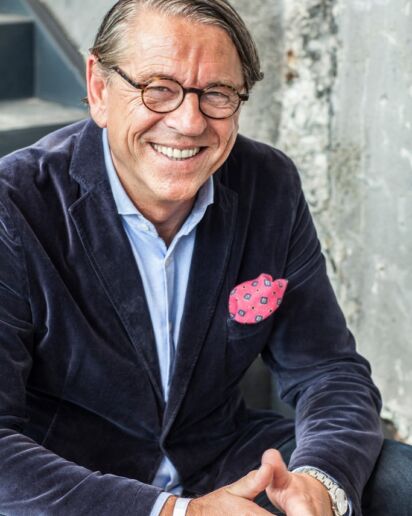
Discover more industry-changing innovations at our upcoming trade shows:
Texfash - Interview
The turnout and excitement at this year’s Munich Fabric Start matched pre-pandemic levels. What were the changes that you noticed in terms of buying practices? What were buyers looking for? Were they more circumspect? Were people taking more measured decisions?
Sustainability has become even more important than before. Many exhibitors have told us that the first questions buyers ask them are: Are your business practices are sustainable? Are your plants certified? Are your products recyclable? Those are no longer questions of marketing; they are questions of the market. Moreover, the conflict situation of skyrocketing energy prices, the current geopolitical unpredictability plus ever imminent shortages of some raw materials are necessitating fast and even further transformations towards more efficient technologies and processes. Everyone at every single position of the supply chain knows that they can no longer afford to waste resources. So yes, people are taking more measured, circumspect decisions.
Another main topic is the discussion about prices. Especially, Germany is a very price sensitive market. There are fixed retail prices brands do not want to change. Now that raw material and energy costs are rising, buyers and product managers are searching for solutions. This is quite challenging if they at the same time want to maintain their high quality and create collections with exciting, fresh and new looks, colours and materials.
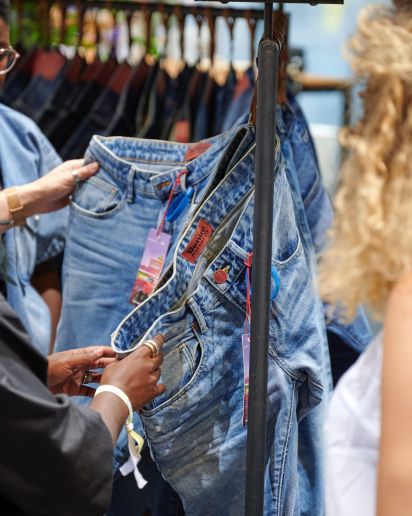
This is also the first time Munich Fabric Start was held since the announcement of the EU Textiles Strategy. Were its overall and long-term implications already reflected this year at MFS? How are companies gearing up?
Many mills and manufacturers are in the midst of or have already shifted to processes that are in accordance with the EU Textiles Strategy. Many denim manufacturers, for example, have adopted dyeing and finishing technologies that work with no or little to no water and entirely without chemicals. Whether it be Muze’s drop dye, Sharabati’s recycling system, Wiser’s oxygen-based, pumice free bleaching process—many have already taken steps to fulfilling the EU’s requirements. In terms of recycling and recyclability, we see that lot of new ideas come up to join forces to use consumer waste as new raw materials to create fashion in circularity. Many countries are looking for solutions. There is a lot to come.
The other thing that has happened, and is still happening, is the Ukraine war. Has it had any impact on Munich Fabric Start in terms of visitors? What was Russian participation like in the earlier years?
To be honest: in this specific case, the first thing we as trade show organisers care about is the people, not our performance indicators or visitor numbers. For sure, this war has an impact on all of us on a way deeper level. During the last couple of days, I had several talks to long-time friends who are affected on a personal level by having relatives in regions that have turned into a war zone, or knowing business partners who had to flee, or just personal memories of travels to places that have now become battle fields. Hearing those stories is heart breaking and it frightens me. On a personal level as well as a professional. Our industry is an exceptionally international one—conflicts are never good for globalisation; armed conflicts and wars even less so.
The Bluezone is a big canvas in itself. It’s a good place to pick up denim trends. How has denim changed since the pandemic?
On an aesthetic trend level, the biggest shift that we see is the concurrency of different trends. Denim is an absolutely ageless phenomenon. And while young generations might be willing to lever heavy qualities from the heritage scene to a wider market, those brands focussing on mid-agers probably tend to source more stretchy ones. The same applies for finishing options. Having said that, we see multiple parallel trends going on in denim. Nevertheless, our own trend forecasters once again identified a meta trend that was able to encompass multiple actual social characteristics and merge them with contemporary ones that move the fashion and design scene—which is why Bluezone’s seasonal theme is ‘Campus’. Under that term we’ve been able to condense a lot of the things that are going on in the denim world right now. And to stimulate education within a community that has a growing mindset and is able and willing to learn and change.
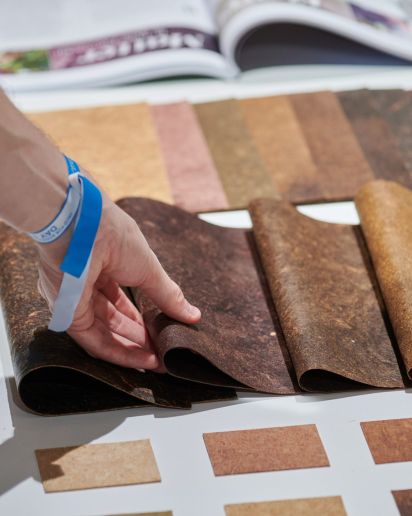
As I have already made apparent earlier, the biggest shift for our whole sector—including the denim universe—is the huge increase in consciousness. Everyone has realised what raw materials are really worth. There is more education around those contexts and a growing interest in details such as social issues or efficiency. We are aware of this demand, which is why we had an extensive series of seminars, lectures and talks at MFS this year, most of which have been centred around circularity, recycling, new materials, traceability and innovations. And we take this matter seriously—we’ve even reached out to enable a ‘coopetitive’ (cooperative competition) cooperation with the Transformer Foundation, resulting in a specialised on stage programme of trans-sectoral discussions and round table talks.
What was the need for The Source, so much so that it needed to be a sub-event and not part of the main Munich Fabric Start?
We actively decided to make it a show-in-show because we wanted to raise awareness for the potential synergies that the simultaneity of a trade show focusing on sourcing and one for fabrics make possible. Think about visiting designers or product managers, and being able to hold meetings with their brand’s fabric producers or even pattern studios and the CMT companies. Our vision is the one of a kind one-stop sourcing ecosystem.
Discover more industry-changing innovations at our upcoming trade shows:
The atmospherica industrial charm of keyhouse
In the atmospheric industrial charm of KEYHOUSE, Hall 5, progressive suppliers and global players from cross-industry sectors will be showing their latest new developments and innovations. On more than 1,000 square metres you will find trend-setting smart textiles, future fabrics and new technologies – be it in terms of sustainability, digitalisation, traceability, technology or finishing.
Staged as an interactive think tank, future-oriented show cases will be in the spotlight alongside Sustainable Innovations. This is also where the main lecture forum of MUNICH FABRIC START is located featuring exclusive keynotes, panel discussions, trend presentations, Q&A sessions and expert talks by international industry insiders. Be inspired by the wide range of products on offer at KEYHOUSE.
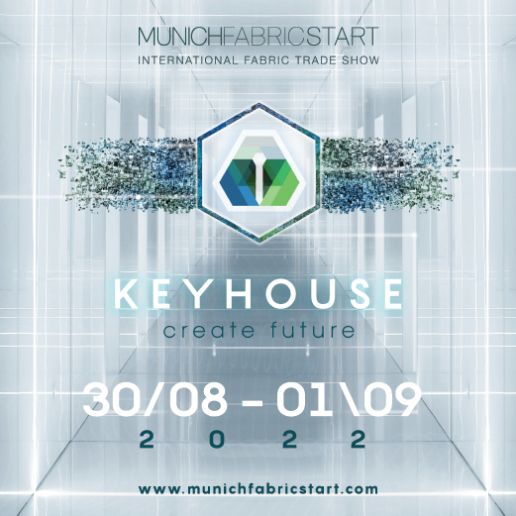
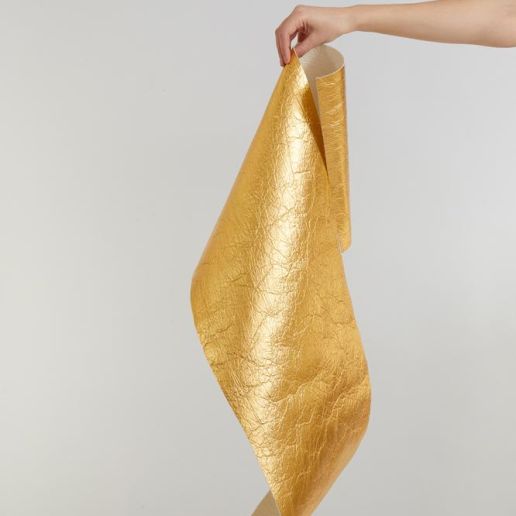
PIÑATEX
Piñatex® by Ananas Anam is a pioneering plant-based textile now made from up to 95% renewable resources. Piñatex is made from agricultural waste, offering a resource efficient alternative to synthetic and virgin grown textiles. Piñatex is available in 22 colours across 4 different collections, with the ability to create custom finishes for orders requiring a bespoke approach
REACTIVE REALITY
Reactive Reality’s PICTOFiT platform creates value for you, your customers and the planet. Their AI can help in all phases of the product lifecycle from design to visual merchandising to shopper experience, purchase and in the Metaverse. To date we have seen increases in shopper engagement of 400%, increases in conversion rate of 55%, and an overall ROI of 500%
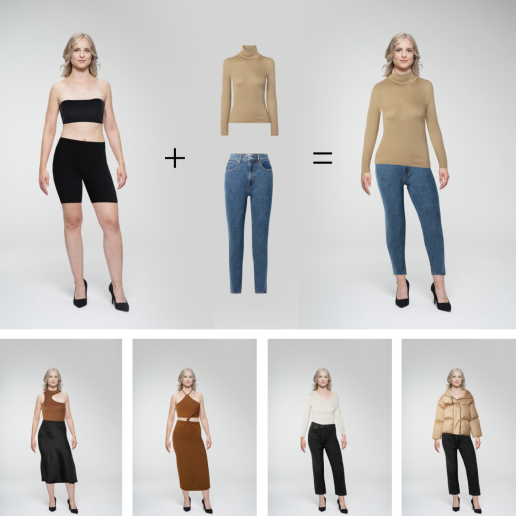
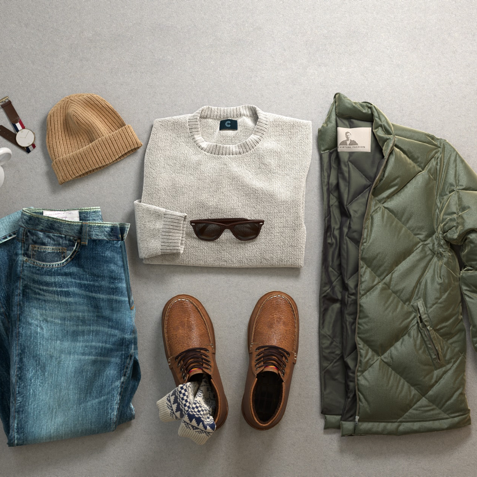
CLO Virtual Fashion
CLO Virtual Fashion is a multinational technology company founded in 2009. With a vision to empower everything related to garments, CLO Virtual Fashion is leading the market by digitally merging, consolidating, and converging all components relating to digital and physical garments through its state-of-the-art 3D Cloth Simulation Algorithm. From 3D garment design software, digital asset management and design development collaborative platform, to consumer-facing services such as virtual fitting on e-commerce, all of CLO Virtual Fashion’s products and services are interconnected to provide clients and users with a more consolidated experience.
MAKEINITALY
MAKEINITALY is a group of technicians in love with a project dedicated to “The Health of the garment we are wearing”. Their innovation is to respect the nature with the re-discovery of traditional Italian textile knowledge. They produce nettle and hemp yarn to create biodegradable fabrics. Dyeing of the fabrics is made with their patent by using vegetable products that reach high and permanent colour fastness.
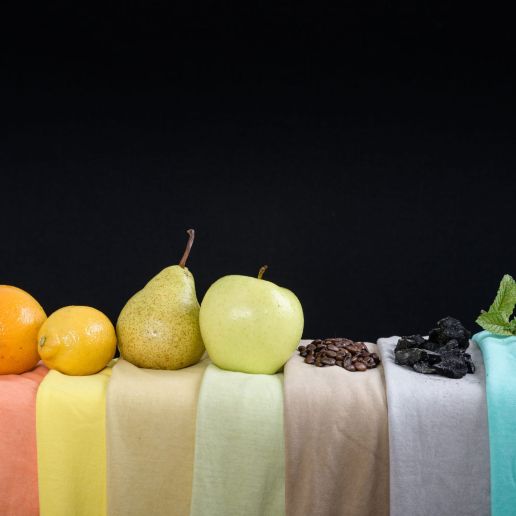
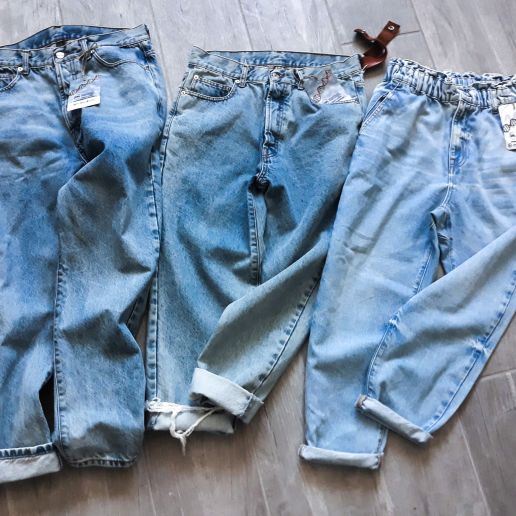
MONTEGA
Montega Chemical Solutions, specialized in production of chemicals for textile treatments, will present THE PERFECT JEANS for a more conscious use of chemicals through application systems with low environmental impact and certified products. This in order to provide guidelines for a more sustainable and truly environmentally friendly production, to be an active part of the change that our planet asks for every day. Find out mor about their solutions and services on their booth at the KEYHOUSE.
EVENT PROGRAM
OF MUNICH FABRIC START & BLUEZONE
AT KEYHOUSE, HALL 5 & THE SEMINAR ZONE, HALL 7
Be inspired by exclusive keynotes, panel discussions, trend presentations, Q&A sessions & Co. by international industry experts.
Look forward to news, insights and first-hand information from the industry.
Discover further industry-disrupting innovations at our upcoming shows:
THE SOURCE - The new hall
As the new one-stop solution for integrated fashion sourcing, THE SOURCE offers flexible sourcing services and solutions for newly conceived value chains on around 2,500 m2 in the new Hall 8, opposite the MOC.
On 3 show days, 65 selected international manufacturing companies presented their offerings from cut-make-trim (CMT) to high-end production in the listed Lokhalle, which with its gigantic dimensions is one of the largest cantilevered historic steel halls in Europe.
A cluster of key sourcing countries such as Portugal, Turkey, Morocco, Tunisia, Bosnia and Vietnam will create a business-relevant mix for risk diversification, the right product mix and for every genre. Discover THE SOURCE and visit the new Hall 8 directly opposite the MOC Munich!
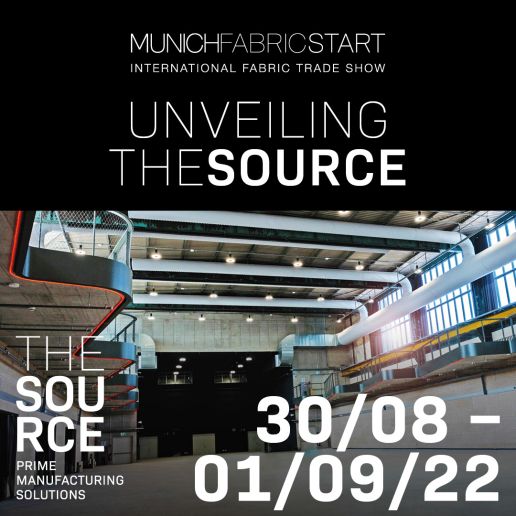
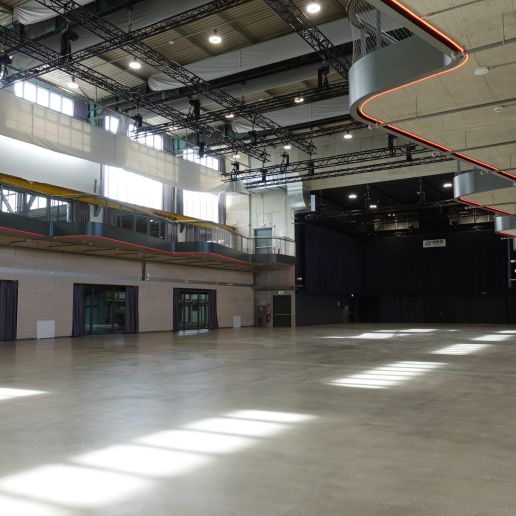
“To expand as a trade fair during the Corona crisis and in challenging times for the fashion industry is anything but a matter of course and was definitely a gamble. We are all the more pleased that we know even before the fair: It was right and important”
Sebastian Klinder, Managing Director of Munich Fabric Start Exhibitions GmbH.
“End-to-end solutions from PLV to white label for brands, labels and retailers are strongly growing segment, which we offer with THE SOURCE an extremely high-quality environment in the long term and in close partnership with our exhibitor. In direct connection to MUNICH FABRIC START and BLUEZONE and in an architecturally outstanding location, with an extremely high-quality exhibition stand system and a selective choice of international exhibitors.”
Sebastian Klinder, Managing Director MUNICH FABRIC START Exhibitions GmbH
